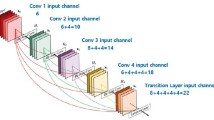Abstract
Lung cancer remains a potentially fatal global health concern, underscoring the criticality of enhancing the precision of early lung cancer diagnosis to ameliorate patient prognoses. Over the past years, the ascent of deep learning (DL) has ushered in a formidable arsenal, with DL-based computer-aided systems orchestrating remarkable strides in the realm of pulmonary nodule detection (PND). This investigation introduces a pioneering approach, namely the Omni-dimension Dynamic Residual 3D Net (ODR3DNet), meticulously tailored for PND by harnessing the prowess of full-dimensional dynamic 3D convolution. The core thrust behind ODR3DNet lies in its ability to surmount the constraints bedeviling conventional 3D CNNs. These limitations encompass a lack of flexibility and a constrained feature extraction capacity. When juxtaposed with the conventional PND algorithms that dominate the field, our proposed algorithm unfurls its prowess by securing an impressively high CPM score of 0.885, thus establishing its resounding superiority. What’s more, our exploration delves deeper as ablation experiments are harnessed to substantiate the manifold contributions of OD3D towards bolstering performance, all while offering an optimal configuration for seamless integration.
Access this chapter
Tax calculation will be finalised at checkout
Purchases are for personal use only
Similar content being viewed by others
References
Chen, Y., Dai, X., Liu, M., Chen, D., Yuan, L., Liu, Z.: Dynamic convolution: attention over convolution kernels. In: Proceedings of the IEEE/CVF Conference on Computer Vision and Pattern Recognition, pp. 11030–11039 (2020)
Ding, J., Li, A., Hu, Z., Wang, L.: Accurate pulmonary nodule detection in computed tomography images using deep convolutional neural networks. In: Descoteaux, M., Maier-Hein, L., Franz, A., Jannin, P., Collins, D.L., Duchesne, S. (eds.) MICCAI 2017. LNCS, vol. 10435, pp. 559–567. Springer, Cham (2017). https://doi.org/10.1007/978-3-319-66179-7_64
George, J., Skaria, S., Varun, V., et al.: Using yolo based deep learning network for real time detection and localization of lung nodules from low dose CT scans. In: Medical Imaging 2018: Computer-Aided Diagnosis, vol. 10575, pp. 347–355. SPIE (2018)
Gu, J., Tian, Z., Qi, Y.: Pulmonary nodules detection based on deformable convolution. IEEE Access 8, 16302–16309 (2020). https://api.semanticscholar.org/CorpusID:210972598
He, K., Zhang, X., Ren, S., Sun, J.: Deep residual learning for image recognition. In: Proceedings of the IEEE Conference on Computer Vision and Pattern Recognition, pp. 770–778 (2016)
Li, C., Zhou, A., Yao, A.: Omni-dimensional dynamic convolution. arXiv preprint arXiv:2209.07947 (2022)
Li, Y., Fan, Y.: Deepseed: 3D squeeze-and-excitation encoder-decoder convolutional neural networks for pulmonary nodule detection. In: 2020 IEEE 17th International Symposium on Biomedical Imaging (ISBI), pp. 1866–1869. IEEE (2020)
Lin, T.Y., Dollár, P., Girshick, R.B., He, K., Hariharan, B., Belongie, S.J.: Feature pyramid networks for object detection. In: 2017 IEEE Conference on Computer Vision and Pattern Recognition (CVPR), pp. 936–944 (2016). https://api.semanticscholar.org/CorpusID:10716717
Lin, T.Y., Goyal, P., Girshick, R., He, K., Dollár, P.: Focal loss for dense object detection. In: Proceedings of the IEEE International Conference on Computer Vision, pp. 2980–2988 (2017)
Mei, J., Cheng, M.M., Xu, G., Wan, L.R., Zhang, H.: Sanet: a slice-aware network for pulmonary nodule detection. IEEE Trans. Pattern Anal. Mach. Intell. 44(8), 4374–4387 (2021)
Nguyen, C.C., Tran, G.S., Nguyen, V.T., Burie, J.C., Nghiem, T.P.: Pulmonary nodule detection based on faster R-CNN with adaptive anchor box. IEEE Access 9, 154740–154751 (2021). https://api.semanticscholar.org/CorpusID:244419436
Ren, S., He, K., Girshick, R., Sun, J.: Faster R-CNN: towards real-time object detection with region proposal networks. In: Advances in Neural Information Processing Systems, vol. 28 (2015)
Ronneberger, O., Fischer, P., Brox, T.: U-Net: convolutional networks for biomedical image segmentation. In: Navab, N., Hornegger, J., Wells, W.M., Frangi, A.F. (eds.) MICCAI 2015. LNCS, vol. 9351, pp. 234–241. Springer, Cham (2015). https://doi.org/10.1007/978-3-319-24574-4_28
Setio, A.A.A., et al.: Pulmonary nodule detection in CT images: false positive reduction using multi-view convolutional networks. IEEE Trans. Med. Imaging 35(5), 1160–1169 (2016)
Setio, A.A.A., et al.: Validation, comparison, and combination of algorithms for automatic detection of pulmonary nodules in computed tomography images: the luna16 challenge. Med. Image Anal. 42, 1–13 (2017)
Yang, B., Bender, G., Le, Q.V., Ngiam, J.: Condconv: conditionally parameterized convolutions for efficient inference. In: Advances in Neural Information Processing Systems, vol. 32 (2019)
Zhang, H., Zhang, H.: Lungseek: 3D selective kernel residual network for pulmonary nodule diagnosis. Vis. Comput. 39, 679 – 692 (2022). https://api.semanticscholar.org/CorpusID:246359391
Zhang, M., Kong, Z., Zhu, W., Yan, F., Xie, C.: Pulmonary nodule detection based on 3d feature pyramid network with incorporated squeeze-and-excitation-attention mechanism. Concurr. Comput. Pract. Exp. 35 (2021). https://api.semanticscholar.org/CorpusID:233638919
Author information
Authors and Affiliations
Corresponding author
Editor information
Editors and Affiliations
Rights and permissions
Copyright information
© 2024 The Author(s), under exclusive license to Springer Nature Switzerland AG
About this paper
Cite this paper
Wang, Y., Tie, Y., Zhang, D., Zhang, Z., Qi, L. (2024). ODR3DNet: Omni-Dimension Dynamic Residual 3D Net for Pulmonary Nodule Detection. In: Chen, H., Zhou, Y., Xu, D., Vardhanabhuti, V.V. (eds) Trustworthy Artificial Intelligence for Healthcare. TAI4H 2024. Lecture Notes in Computer Science, vol 14812. Springer, Cham. https://doi.org/10.1007/978-3-031-67751-9_2
Download citation
DOI: https://doi.org/10.1007/978-3-031-67751-9_2
Published:
Publisher Name: Springer, Cham
Print ISBN: 978-3-031-67750-2
Online ISBN: 978-3-031-67751-9
eBook Packages: Computer ScienceComputer Science (R0)




